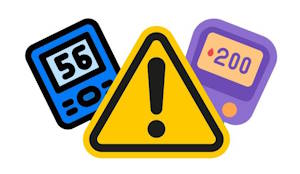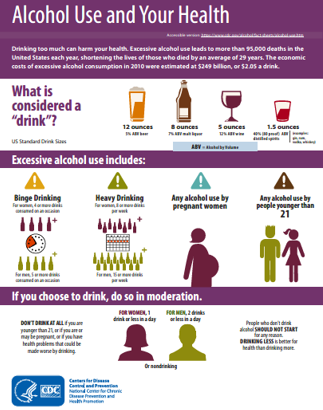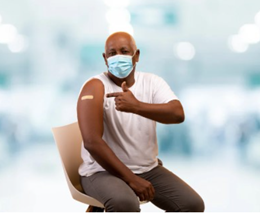Diabetes Care Program
A program for members with Type 2 Diabetes

pharmacy to help you get the support you need.
We know you are taking action to care for type 2 diabetes. To help, our Diabetes Care Program gives you the following benefits:
- A Diabetes Care Team to support your health needs
- Health Education
Members with type 2 diabetes are eligible for the Diabetes Care Program. Services are free and members can decline to participate at any time.
For more information about our Diabetes Care Program:
Call: 1-866-292-0010 (TTY 711)
Office hours: Monday to Friday, 8 a.m. to 5 p.m. PST
E-mail: populationhealth@prospectmedical.com
On this page:
Learn more about living with type 2 diabetes

- Diabetes is a condition in which the level of blood sugar gets too high. After eating, the body releases insulin when glucose in the blood (or blood sugar) goes up. Insulin acts like a key to let blood sugar into your body’s cells to use as energy.
- In type 2 diabetes, the body doesn’t use insulin the way it should, and blood sugar builds up. Overtime, high blood sugars can cause health problems. There is no cure for type 2 diabetes, but you can live your best life with the right treatment.

- The cause of type 2 diabetes is unknown, but some things increase the chances of getting it, including:
- Having a blood relative with diabetes – a parent or sibling
- Having had gestational (during pregnancy) diabetes
- Age – being 45 years or older
- Being overweight
- Being inactive

- It is possible to have type 2 diabetes with no symptoms. Symptoms can also appear suddenly or over time, and include:
- Being very thirsty
- Feeling very hungry
- Having blurry vision
- Losing weight without trying
- Urinating (peeing) a lot, often at night
- Take action! Call your doctor if you feel any of these symptoms. In an emergency, dial 9-1-1.

- Take charge of your health with your doctor and create an action plan to:
- Take your medicines as prescribed
- Check your blood sugar at home as advised
- Watch for symptoms of type 2 diabetes
- Raise your blood sugar when it gets too low
- Track your eating habits – make healthy changes
- Check your feet daily for redness and sores
- Be active and move daily
- Then, create an action plan to:
- See your doctor at least once a year
- Get your feet and eyes checked at least once a year
- Always have testing supplies to check your blood sugar
- Get an A1C (or blood sugar lab test) as advised
- Check your cholesterol once a year
- Track your blood pressure daily
- Set healthy and small goals to lose weight
- Take good care of yourself when you get sick
- Avoid using tobacco and stay away from others who smoke

- Living with diabetes may cause fear, stress, and depression, but you are not alone. Choose an action plan to:
- Talk about your concerns for managing diabetes with your doctor and diabetes care team
- Seek help from family and friends for emotional support
- Join a support group and learn coping skills from others
- Ask for a referral to a counselor for depression if needed
Learn more about managing type 2 diabetes with the following resources
Prospect’s diabetes action plan
Steps to manage your diabetes for life
- Diabetes and Smoking
- Ten tips for quitting smoking
- Benefits of quitting smoking
- For more aid to help you quit call Kick It California at 1-800-300-8086 or visit www.kickitca.org.
- Kick It California in other languages:
- Spanish - Phone: 1-800-300-8191, Web: www.kickitca.org/es
- Chinese – Phone: 1-800-838-8917, Web: www.asiansmokersquitline.org/?lang=zh-hans
- Korean – Phone: 1-800-556-5564, Web: www.asiansmokersquitline.org/?lang=ko
- Vietnamese- Phone: 1-800-778-8440, Web: www.asiansmokersquitline.org/?lang=vi
Health education materials are posted with permission from authorized agencies and organizations. References for content on diabetes type 2: American Diabetes Association-2023 Standards of Care, NIH-Diabetes, CDC-Diabetes, Mayo Clinic-Diabetes, and International Diabetes Federation.




 Guides to managing type 2 diabetes -->
Guides to managing type 2 diabetes --> Know your blood pressure -->
Know your blood pressure --> Know your cholesterol -->
Know your cholesterol --> Choose healthier foods and cut down on added sugars -->
Choose healthier foods and cut down on added sugars --> If you smoke, quit -->
If you smoke, quit --> Be active and move daily -->
Be active and move daily --> Take care of your mental health and wellbeing -->
Take care of your mental health and wellbeing --> Do not drink too much alcohol -->
Do not drink too much alcohol --> Get vaccinated ->
Get vaccinated ->